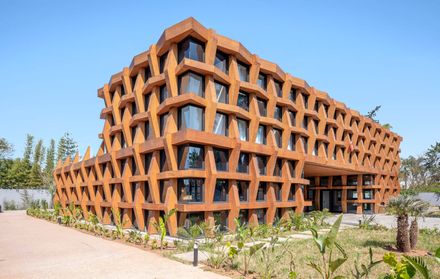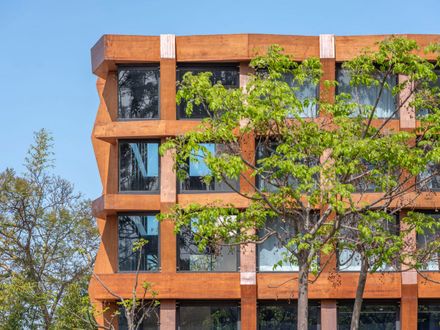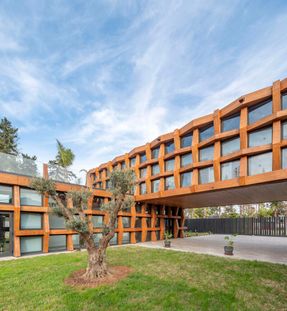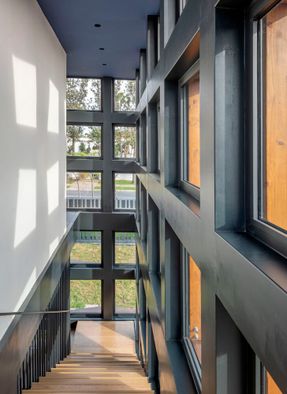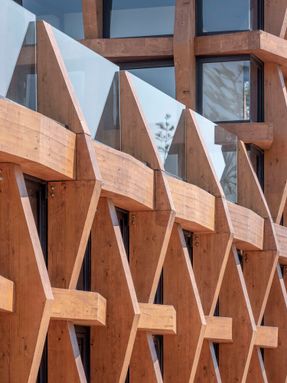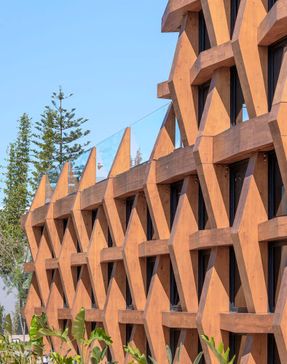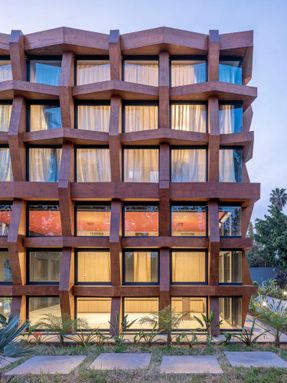ARCHITECTS
Oualalou+choi
LEAD ARCHITECT
Tarik Oualalou, Linna Choi, Sofia Bennani, Daniel Larré, Chaimae Laassel, Ghita Benjel-loun, Chama Mehdaoui, Mourad Bellaanaya
PHOTOGRAPHS
Luc Boegly
AREA
493 m²
YEAR
2025
LOCATION
Rabat, Morocco
CATEGORY
Embassy
English description provided by the architects.
Located in the prestigious diplomatic district of Rabat, the new Royal Thai Embassy sits on a strategic site in the country's capital.
Though the initial brief was to rehabilitate an existing dilapidated villa, we realized that with a similar investment in time and budget, it would be preferable to demolish the existing building and construct a new one that would be better adapted to its role as an embassy.
Based on a fluid principle of circulation and access, the new Royal Thai Embassy presents an open and welcoming presence, from its porous boundary walls to its transparent facades. The building sits amidst a tropical garden, which serves as the primary event space for the embassy's many diplomatic functions.
The embassy's wooden façade is inspired by traditional Thai architecture and Moroccan geometric woodwork patterns.
The ancestral method of weaving is utilized as a means of construction (exterior walls, partitions, shading) and for various traditional objects and ornaments.
This project aims to meld Thai and Moroccan traditions into a harmonious whole.
Building in wood also responds to the extremely tight time constraints, and the prefabrication of the wooden façade facilitates a compressed construction schedule.
The choice of construction material is inseparable from the building's design and the logic behind its implementation, which aims to be swift, efficient, and ecological.
OUALALOU+CHOI is an award-winning international team of architects and urban designers based in Paris and Casablanca.
Founded by Tarik OUALALOU and Linna CHOI, the office considers the architectural project as a means of challenging given restraints and creating work that resonates across different cultures and contexts.
The office approaches architectural projects as spaces of negotiation and resistance, where communities and their relationship to public space can be reimagined.





